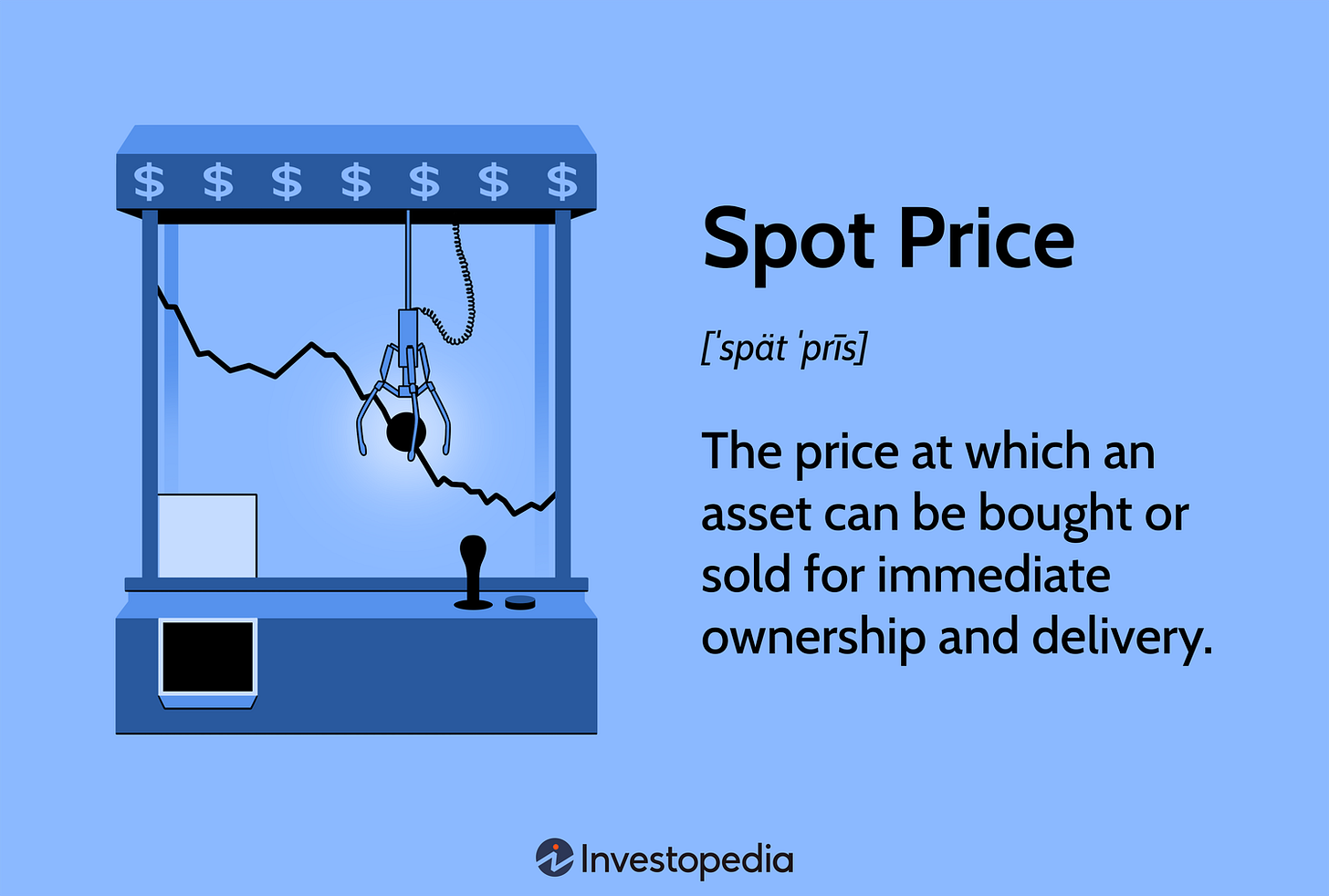Commodity Futures and Hard Tech
A topic you never thought you'd see on a VC blog
From time to time we talk about finance things on here. Buckle up, today we’re doing commodity futures!
Let’s talk about spot vs. futures markets. The spot market is what you earn when you sell your product today. The futures market reflects what customers believe your output will be worth months or years from now and often dictates how your contracts are priced.
In efficient markets, the futures curve can slope either way. When futures trade below spot, the market expects supply to loosen (called backwardation). When futures trade above spot, it expects scarcity (contango). That curve tells you how the world values time and risk in your product.
In software, revenue is all priced in “spot.” That’s why we can confidently project ARR by taking last month’s revenue and multiplying it by twelve. Last month’s unit price is a decent predictor of next year’s.
Not so in commodities, where many Hard Tech businesses live: materials, energy, advanced manufacturing, even aerospace capacity. You can’t take last month’s revenue and multiply it by twelve to get a run rate. As production scales, your realized price per unit often falls. The spot price, which is the revenue most startups start with, is usually the best price you’ll ever see. The futures price, the market’s view of long-term supply and demand, is what determines whether your business model ultimately works.
As venture capital moves deeper into Hard Tech and reindustrialization, investors who understand how commodity risk flows through a business will underwrite smarter and help founders scale faster. Out-engineering competitors isn’t enough. Founders will need to manage pricing risk, backlog, and capital intensity with the same precision they apply to their technology.
Revenue quality matters just as much as revenue growth. Know the shape of it early and keep learning how it moves.



